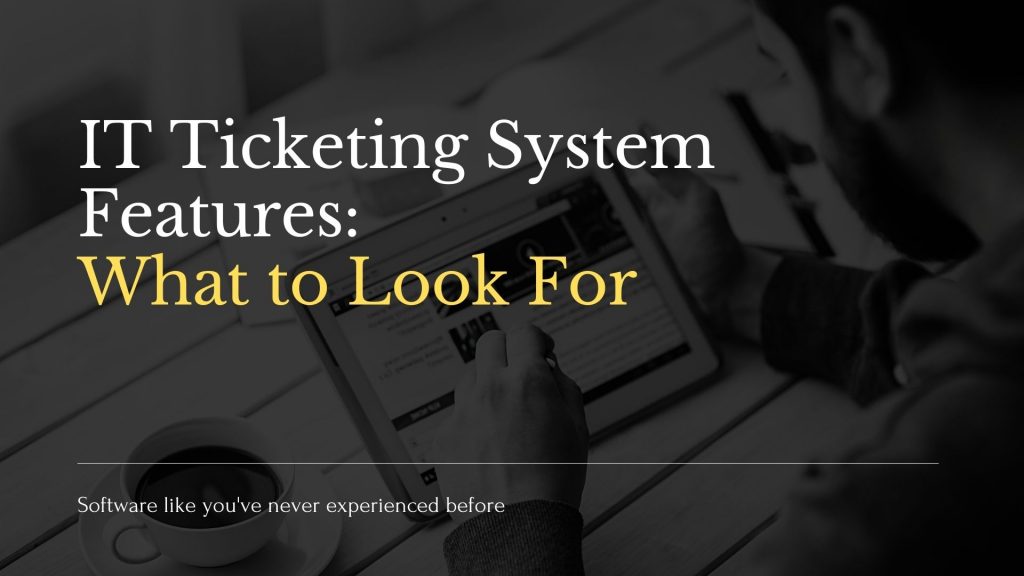
Looking for an IT helpdesk ticketing system?
Tickets, calls, faulty equipment, people complaining… IT support moves at supersonic speed and, if your IT professionals have to manage everything with, say, Outlook, your company may be losing a lot of money.
Pair an email client with the high wages typical for the industry and you’ll get yourself in a “throwing money down the drain” situation. Resolving a single tech support case can cost anywhere between $2.93 and $49.69 and, if you offer tiered IT support, you can expect the expense to triple every time an issue is escalated.
Generally speaking, what an IT support ticket system does is to automate manual tasks and help IT staff manage the lifecycle of each request.
At the heart of an IT support ticket system is, as the name suggests, ticket management. The system creates a ticket each time a new case is submitted, appending all relevant customer and incident data to it. Some systems also have advanced tools for asset management, IT change management, network diagnostics, problem and incident management, etc.
Note that the terms “IT help desk” and “IT service desk” can sometimes be used interchangeably even though, strictly speaking, they are two separate entities. Unlike the help desk, the service desk puts an emphasis on the users or, as the ITIL framework defined it, a service desk is “the point of communication between the service provider and all its users.” By contrast, when IT help desks first appeared in the 1980s, they were simply a means of reporting and resolving incidents on an ad-hoc basis.
The terminology gets even more confusing when your IT department doubles as a customer service department. Fortunately, most IT ticketing software can be used for both employee support and customer support. So, you can get away with using the wrong term.
IT Ticketing System Features: What to Look For
When looking for a helpdesk ticketing system, it’s important to consider both your customer’s needs and your agents’ workflow. Not all systems offer the full set of features and you may end up using a combination of tools to achieve the desired results.
In general, here’s what to look for when choosing IT ticketing software.
Self-service options
An internal knowledge base helps your IT team work more efficiently because it enables employees to serve themselves. Your busy users will appreciate the ability to find the answers and instructions they need without having to wait.
Unified smart inbox
One of the crucial features of an IT ticketing system is the ability to create helpdesk tickets from various sources such as email, live chat, social media, phone calls, etc. If there is a single dashboard to view and manage all incoming tickets, your team will be more productive.
Automation
Most ticketing systems allow you to define triggers and rules to change ticket status, priority, category, and other ticket attributes automatically.
Security
Customer details are often attached to service tickets, passwords are sent back and forth, and so on. Ticketing system software should be able to protect your sensitive data.
Insights
Speed is extremely important in IT support which is why most teams have SLAs (Service Level Agreements) they have to stick to. That’s why analytics and insights are a crucial aspect of ticketing system software.
Integrations
If you work in a large organization, integrations with other software will be a chief consideration in your search for a service desk ticketing system.
Scalability
When choosing service tickets software, you might want to consider the ability to scale.
Compliance
Last but not least, you have to think about regulations and standards. If you work for a healthcare organization, you’ll need a HIPAA compliant help desk. If your company has to conform to ITIL, you’ll need a help desk system that meets the ITIL requirements.